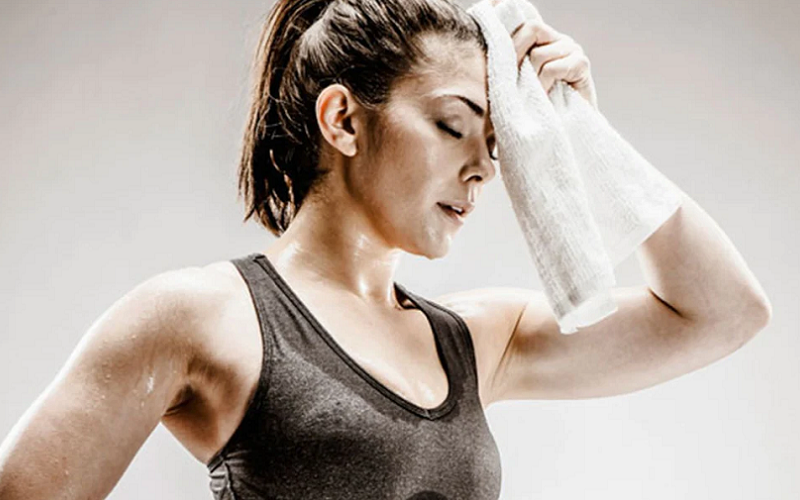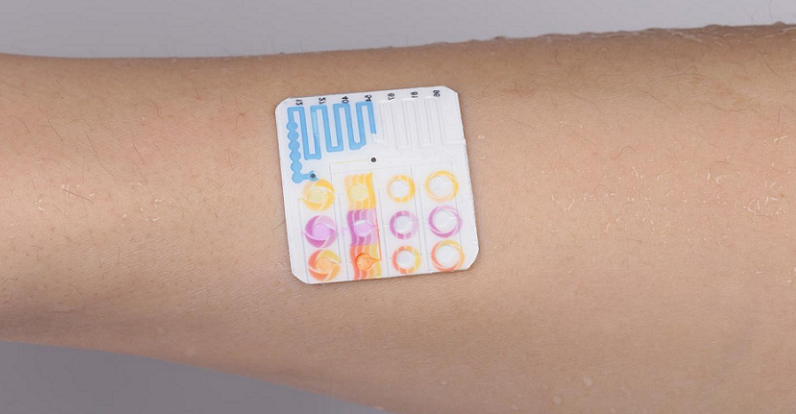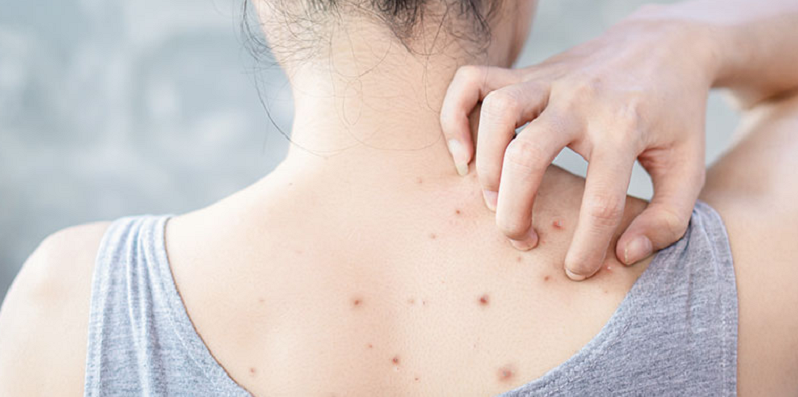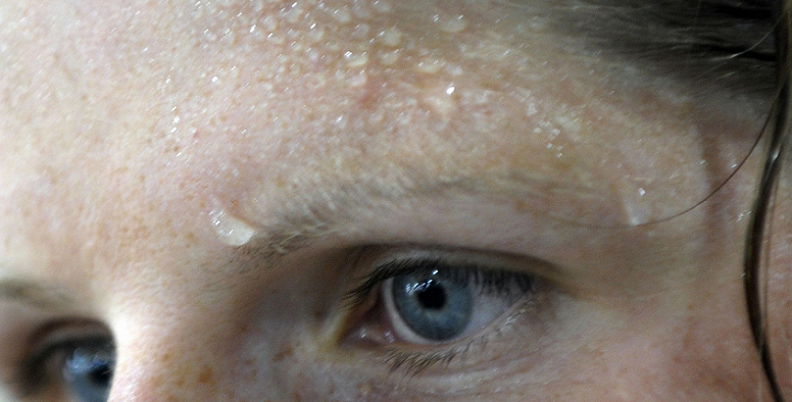
We’ve all heard about the numerous benefits of regular exercise for our overall health and well-being, but did you know that your workout routine can also have a significant impact on the health and appearance of your skin? Here we examine the science behind the skin’s structure and function, the process of sweating, and how these elements interact during exercise. We explore how exercise and sweat can boost your skin’s health, from improving blood circulation and collagen production to aiding in detoxification and hydration. We also discuss some common skin problems associated with excessive sweating and provide tips on how to maximize the skin benefits of your workout routine.
Contents
- Understanding the Skin’s Structure and Function
- The Science of Sweating
- The Impact of Exercise on Skin Health
- The Connection Between Sweat and Skin Health
- Common Skin Problems Associated with Excessive Sweating
- Tips to Maximize the Skin Benefits of Exercise and Sweating
- Debunking Myths About Sweat and Skin Health
- References
Understanding the Skin’s Structure and Function
Before we delve into the effects of exercise and sweat on your skin, it’s essential to understand the basic structure and function of the skin. As the largest organ of the body, the skin plays a vital role in protecting us from external threats and maintaining our overall health.
Importance of Exercise and Sweat for Skin Health
Exercise and sweat are often overlooked when discussing skin health, but they play a crucial role. Regular exercise not only improves your cardiovascular health, muscle tone, and mood, but it also promotes healthier, more vibrant skin. Sweating, while sometimes seen as a nuisance, is a natural and essential bodily function that aids in maintaining skin health.
Basic Anatomy of the Skin
The skin is composed of three main layers: the epidermis, the dermis, and the hypodermis.
The epidermis, the outermost layer, acts as a protective barrier against environmental factors like UV radiation and harmful microbes. It’s also where new skin cells are formed.
The dermis, located beneath the epidermis, contains blood vessels, nerve endings, sweat glands, and hair follicles. It’s responsible for the skin’s elasticity and strength, thanks to the collagen and elastin fibers present in this layer.
The hypodermis, also known as the subcutaneous layer, is the deepest layer of the skin. It’s mainly composed of fat and connective tissue and serves as an energy reserve and insulation for the body.
Role of the Skin in Detoxification
One of the skin’s lesser-known but crucial functions is detoxification. The skin, along with the liver, kidneys, and digestive system, plays a significant role in eliminating toxins from the body.
Sweat glands, located in the dermis, are key players in this detoxification process. When your body temperature rises, such as during exercise, these glands produce sweat, which is a mixture of water, salt, and other minerals. As sweat travels up the sweat duct and onto the skin’s surface, it can carry along with it toxins, such as heavy metals and harmful chemicals, effectively helping to cleanse your skin and body [1].

The Science of Sweating
Sweating is a natural and essential bodily function that plays a crucial role in maintaining our body’s homeostasis. While often associated with hot weather or intense physical activity, the process of sweating is much more than just a way to cool down.
The Process of Sweating
Sweating, also known as perspiration, is primarily a cooling mechanism. When your body temperature rises—due to exercise, hot weather, or even stress—your nervous system stimulates your sweat glands to produce sweat. This sweat, composed mainly of water but also containing salts and other minerals, is released onto the skin’s surface. As it evaporates, it helps to cool down the body.
There are two types of sweat glands in the human body: eccrine glands and apocrine glands. Eccrine glands are found all over the body and produce a clear, odorless sweat. Apocrine glands, on the other hand, are located in areas with a high concentration of hair follicles, like the armpits and groin, and produce a thicker sweat that can cause body odor when it interacts with bacteria on the skin.
Benefits of Sweating for the Skin
While sweating’s primary function is thermoregulation, it also offers several benefits for the skin [2].
Firstly, as we discussed earlier, sweating can aid in detoxification. As sweat travels up the sweat duct and onto the skin’s surface, it can carry with it toxins, effectively helping to cleanse your skin and body.
Secondly, sweat helps to keep your skin moisturized. The natural oils in sweat can help to maintain the skin’s barrier function, preventing dryness and keeping your skin hydrated.
Lastly, sweat can also contribute to maintaining the skin’s optimal pH. The skin’s pH is slightly acidic, which helps to protect against harmful bacteria and other pathogens. Sweat, being slightly acidic, can help to maintain this pH balance

The Impact of Exercise on Skin Health
Exercise is a powerful tool for maintaining and improving overall health, and your skin is no exception. Regular physical activity can have profound effects on your skin’s health and appearance.
How Exercise Improves Blood Circulation
One of the most immediate effects of exercise is an increase in blood circulation. As your heart rate increases during a workout, blood flow throughout your body, including to your skin, is enhanced. This increased blood flow delivers oxygen and nutrients to the skin cells, promoting their health and vitality.
Improved circulation also aids in the removal of waste products, including free radicals, from the skin cells. This process can help to prevent premature aging and promote a healthy, youthful complexion [3].
Exercise and Collagen Production
Collagen is a protein that provides structure and elasticity to the skin. As we age, our bodies naturally produce less collagen, leading to wrinkles and sagging skin.
Research suggests that regular exercise can stimulate collagen production. The increased blood flow during exercise delivers nutrients that are essential for collagen synthesis to the skin cells. Moreover, exercise-induced sweat can help to remove toxins that may interfere with collagen production [4].
Exercise and Skin Cell Regeneration
Skin cell regeneration is a continuous process where old cells are shed and replaced by new ones. This process is crucial for maintaining the skin’s health and appearance.
Exercise can promote skin cell regeneration in several ways. Firstly, the increased blood flow during exercise provides the skin cells with the nutrients they need to grow. Secondly, the physical stress of exercise can stimulate the production of growth factors that promote cell regeneration. Lastly, the sweat produced during exercise can help to unclog pores, allowing the new cells to surface.

The Connection Between Sweat and Skin Health
Sweating, while sometimes seen as a nuisance, is a natural and essential bodily function that can significantly contribute to skin health.
Sweat’s Role in Hydrating the Skin
One of the lesser-known benefits of sweat is its role in hydrating the skin. While it may seem counterintuitive, as sweat is often associated with dehydration, the natural oils in sweat can actually help to maintain the skin’s barrier function. This barrier prevents excessive water loss, keeping your skin hydrated and healthy.
However, it’s important to note that sweating is not a substitute for drinking water. While sweat can help to keep your skin moisturized, staying properly hydrated by drinking enough fluids is crucial for overall skin health [5].
Sweat and Skin Detoxification
As we’ve discussed earlier, sweat plays a significant role in the skin’s detoxification process. When you sweat, your body can expel toxins, such as heavy metals and harmful chemicals, that may have accumulated in your skin. This cleansing process can help to prevent skin issues like acne and dullness, promoting a clearer, more radiant complexion.
Sweat and Skin’s pH Balance
The skin’s pH is slightly acidic, which helps to protect against harmful bacteria and other pathogens. Sweat, being slightly acidic, can help to maintain this pH balance. By doing so, sweat can support the skin’s natural defenses, helping to prevent skin infections and inflammation [6].

Common Skin Problems Associated with Excessive Sweating
While sweat has numerous benefits for skin health, excessive sweating can sometimes lead to skin problems. It’s important to understand these potential issues so you can take steps to prevent them and keep your skin healthy.
Acne and Breakouts
Sweat can sometimes contribute to acne and breakouts. While sweat itself is not pore-clogging, it can mix with oils and bacteria on the skin’s surface, leading to clogged pores. If you’re prone to acne, it’s important to cleanse your skin before and after sweating to remove any potential pore-clogging substances.
Fungal Infections
Fungi thrive in warm, moist environments, making excessively sweaty skin a prime breeding ground for fungal infections. Common fungal skin infections include athlete’s foot, jock itch, and ringworm. To prevent these infections, try to keep your skin as dry as possible in areas prone to excessive sweating, and wear breathable clothing during exercise [7].
Heat Rash
Heat rash, also known as prickly heat, is a skin condition that can occur when sweat ducts become blocked and sweat gets trapped under the skin. This can cause small, itchy bumps or blisters. Heat rash often resolves on its own, but keeping your skin cool and dry can help prevent it.
Tips to Maximize the Skin Benefits of Exercise and Sweating
While exercise and sweat can greatly benefit your skin, it’s important to follow certain practices to maximize these benefits and prevent potential skin problems.
Proper Hydration Before, During, and After Exercise
Staying hydrated is crucial for overall skin health. Proper hydration helps maintain your skin’s elasticity and prevents dryness. It’s especially important to drink enough water when you’re exercising, as you lose fluids through sweat. Aim to drink water before, during, and after your workout to replace lost fluids and keep your skin hydrated.
Importance of Wearing Breathable Clothing
Wearing breathable clothing during exercise can help manage sweat and prevent skin problems. Fabrics like cotton or specially designed sports fabrics allow sweat to evaporate, keeping your skin dry and reducing the risk of acne and fungal infections. Avoid tight, non-breathable clothing that can trap sweat against your skin.
The Role of Post-Workout Skin Care
Taking care of your skin after a workout is just as important as the workout itself. After exercising, cleanse your skin to remove sweat, oil, and bacteria that could clog your pores. If possible, take a shower after your workout. If that’s not feasible, consider using a gentle cleansing wipe.
After cleansing, apply a moisturizer to replenish any lost hydration and maintain your skin’s barrier function. If you’ll be going outside, don’t forget to apply sunscreen to protect your skin from UV damage.
Debunking Myths About Sweat and Skin Health
When it comes to sweat and skin health, there’s a lot of misinformation out there. Understanding the truth behind these myths can help you take better care of your skin and maximize the benefits of your workout.
Myth: Sweating Causes Acne
While it’s true that sweat can mix with oils and bacteria on the skin’s surface to clog pores, sweat itself does not cause acne. In fact, as we’ve discussed, sweat can actually help cleanse the pores by flushing out toxins. The key to preventing post-workout breakouts is to cleanse your skin before and after exercising to remove any potential pore-clogging substances.
Myth: Exercise Dries Out the Skin
Some people believe that because exercise and sweating can lead to fluid loss, they can also dry out the skin. However, as we’ve discussed, sweat actually contains natural oils that can help maintain the skin’s barrier function and keep it hydrated. The key is to replenish lost fluids by drinking enough water before, during, and after your workout.
Myth: All Sweat is the Same
Not all sweat is created equal. As we’ve discussed, there are two types of sweat glands in the human body: eccrine glands and apocrine glands. Eccrine sweat, which is produced all over the body, is clear and odorless. Apocrine sweat, produced in areas like the armpits and groin, is thicker and can cause body odor when it interacts with bacteria on the skin.
References
[1] How Your Workout Can Affect Your Skin
[2] The Good (and Not So Good) Effects of Sweat on Your Skin
[3] Exercise and Acne – How to Balance the Breakouts
[4] Differences in Skin Health Outcomes according to Physical Activity Level
[5] Physical Activity and Perspiration
[6] How sweat and exercise affect your skin
[7] 12 Reasons Why Sweating Is So Freaking Good For You
